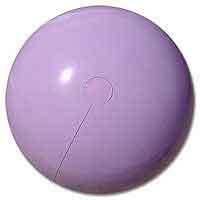A pair of dragonflies is taking it in turn to do sentry duty in our garden. On some warm evenings, a vivid red dragonfly perches on the shepherd's hook that holds bird feeders in the winter. Other evenings, a dark dragonfly lined with yellow passenger-train windows on his sides alights there.
Both dragonflies use the site as a launch pad for hunting insects on the wing. The dragonfly suddenly whirs away, zigzags in the air, and circles back to the hook to watch for prey again. It will spend a good portion of an hour hawking like this.
Dragonflies are famous for their speed and maneuverability as well as their keen eyesight (if you had 30,000 facets in each eye, you might be able to spot a flying gnat 10 feet away, too). Oh, and also for being Very Large Insects. (Though not as big as their prehistoric kin, which would have required a yardstick for measuring, if yardsticks had been invented yet.)
 Their size, huge eyes, long abdomens, and strong flight have caused them to migrate into the folklore of many cultures (and you can find out about some of this in the wonderful book A Dazzle of Dragonflies by Forrest L. Mitchell and James L. Lasswell).
Their size, huge eyes, long abdomens, and strong flight have caused them to migrate into the folklore of many cultures (and you can find out about some of this in the wonderful book A Dazzle of Dragonflies by Forrest L. Mitchell and James L. Lasswell).Not all of this folklore resides in the ancient past, either.
The first dragonfly I ever saw was one that skimmed over my suburban backyard on New York's Long Island. I didn't know what it was. I screamed bloody murder. I was, after all, very small, and it was very big.
My mom explained to me that it was a "darning needle," this being one of the dragonfly's many common names. I hadn't a clue what a "darning needle" was (except for, now, this insect) and my ears heard "diamond needle," which is what I called it for weeks thereafter. No wonder nobody knew what I was talking about when I still came in screaming about one appearing.
Why the screaming? I'd been informed by my German grandmother that dragonflies were known to sew shut the mouths of children. You'd scream, too.
Sewing shut mouths as well as eyes, ears, and noses, and even stitching together fingers and toes, were among the crimes dragonflies were accused of in the past. This earned them their darning-needle name as well as the epithets devil's needle and ear-piercer.
And speaking of the devil, in Europe dragonflies were often believed to be one of the devil's favorite animal forms to inhabit or simply for evil beings to ride, giving rise to names such as devil's horse, hobgoblin fly, witch's horse, and water witch.
Another completely false accusation laid at the dragonfly's six feet are that it possesses a venomous sting. This untruth has dubbed the insect with colorful names such as horse stinger, bull sticker, blind stinger, and snake killer. (Though oddly it's also known as a snake doctor.)
The dragonfly enjoys a more exalted position in Native American and Asian folklore, in which it's generally admired for its grace, beauty, ferocity, and flying skill. Judging by the number of dragonfly motifs on modern dishware and other home furnishings, it appears that this take on the dragonfly may predominate nowadays.
Which is an excellent thing, as it would prevent an uprising of Instantly Concocted Folklore such as occurred in that long-ago backyard. As I cringed on the ground one afternoon when a dragonfly began circling above my sandbox, my friend Elaine had a scathingly brilliant idea.
"Did you know that dragonflies are scared of sand and you're supposed to throw it at them to make them go away?" she said.
Wow! Who knew! Well, obviously Elaine did! We could be proactive! Soon we were merrily flinging great handfuls of sand into the air, dodging it as it rained down on the lawn. My mom looked out the window, gaped at what was going on, and quickly put a stop to it.
Dragonflies (known as "mosquitohawks" in parts of the Midwest) are aces at devouring pesky insects, so I don't think most people are driving them away with buckets of sand. Dragonflies are also very cool to watch, and don't appear to mind your approaching them quite closely (they probably glance-x-30,000 at you, think "not bug no eat it, not bird it no eat me" and go back to spotting midges).
They also have beautiful names. In this department they've truly lucked out. Unlike gorgeous birds who get saddled with tiresome names that include their so-called discoverer's name (Clark's nutcracker, Bewick's wren, blah blah), dragonflies have scooped up adjectives as avidly as they scoop up mosquitoes in the basket formed by their legs.
Just a quick look at a dragonfly-&-damselfly field guide offers up such evocative names as Smoky Shadowdragon, Amethyst Dancer, Apache Spiketail, Ebony Boghaunter, Rainpool Spreadwing, and Spangled Skimmer.
I still don't know what species the dark dragonfly that visits my garden belongs to. The bright red dragonfly appears to be a Cardinal Meadowhawk (Sympetrum illotum).
I could be wrong. If I am, please don't throw sand at me. I certainly don't throw sand at dragonflies anymore. Nor do I scream when they show up, unless it's to holler to a family member to come take a look.












